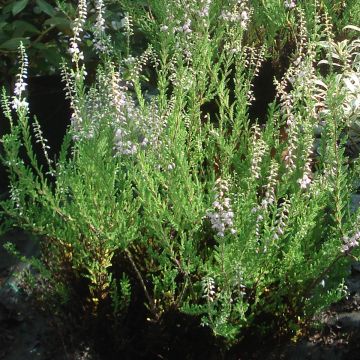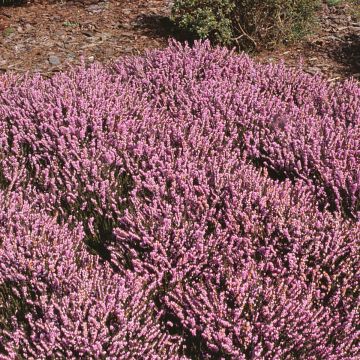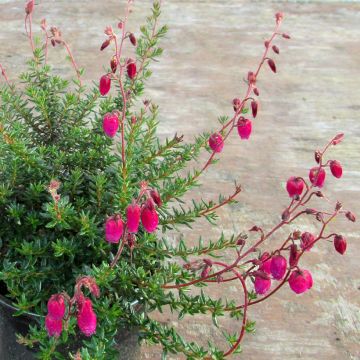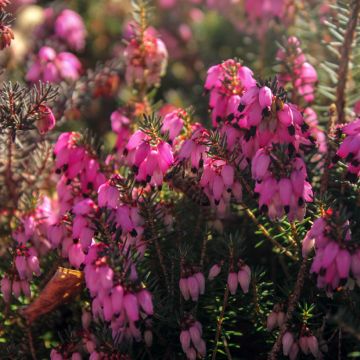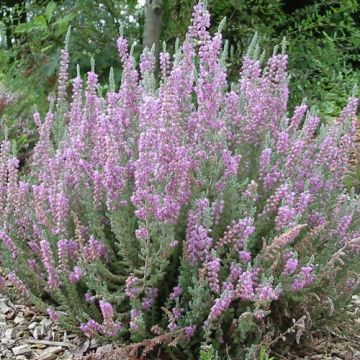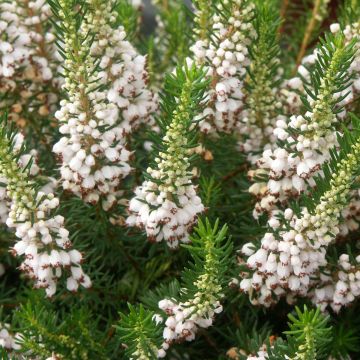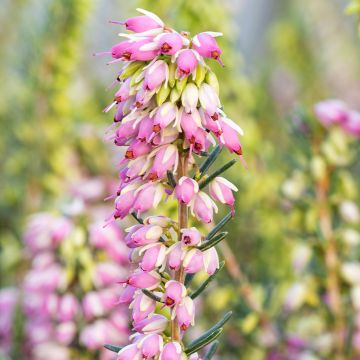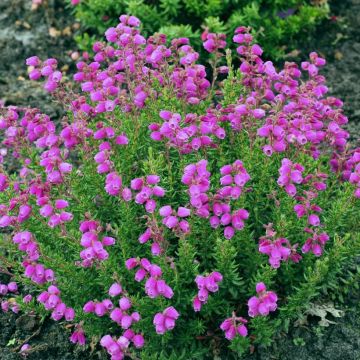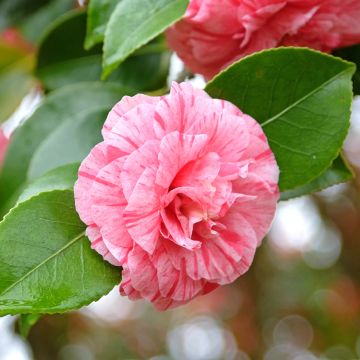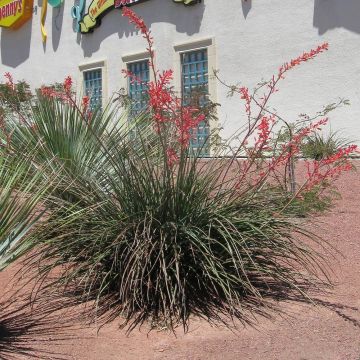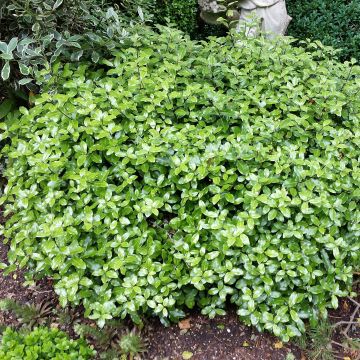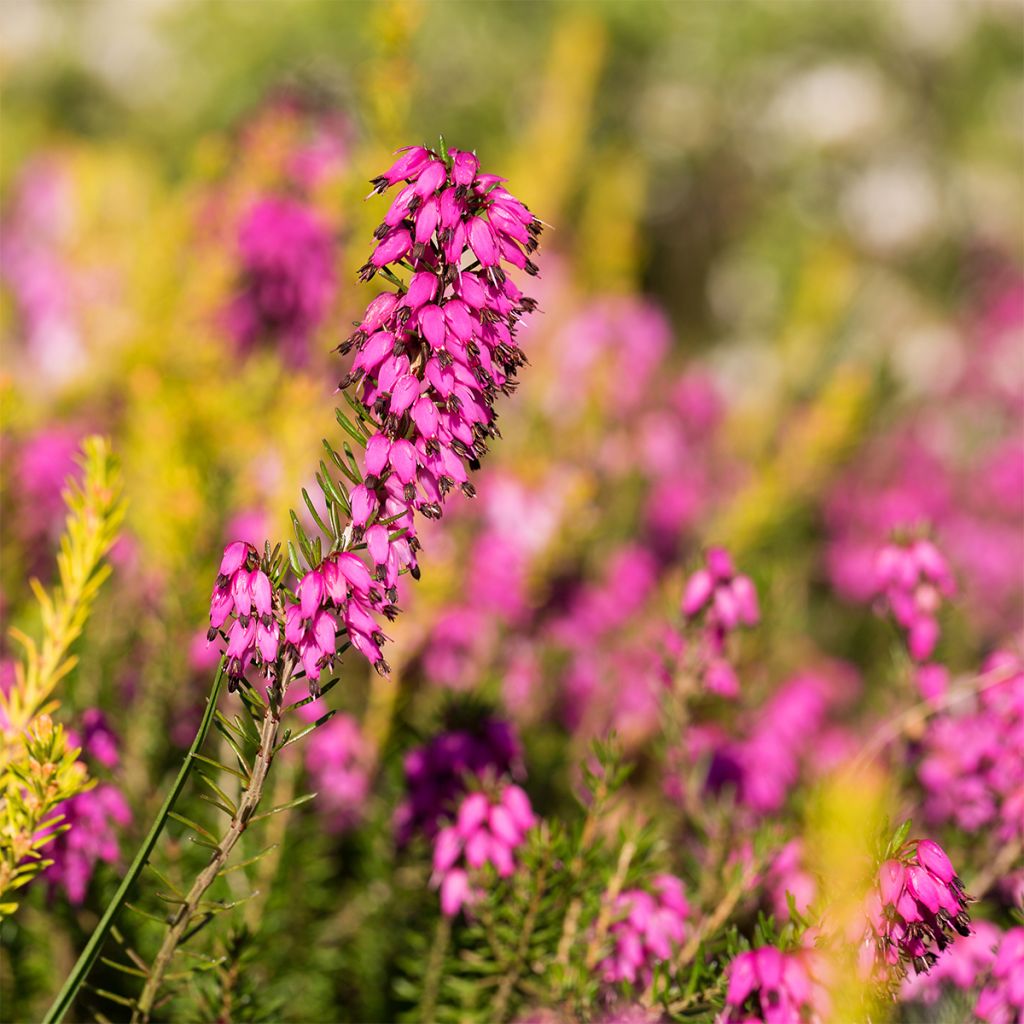

Erica carnea Myretoun Ruby - Winter Heath
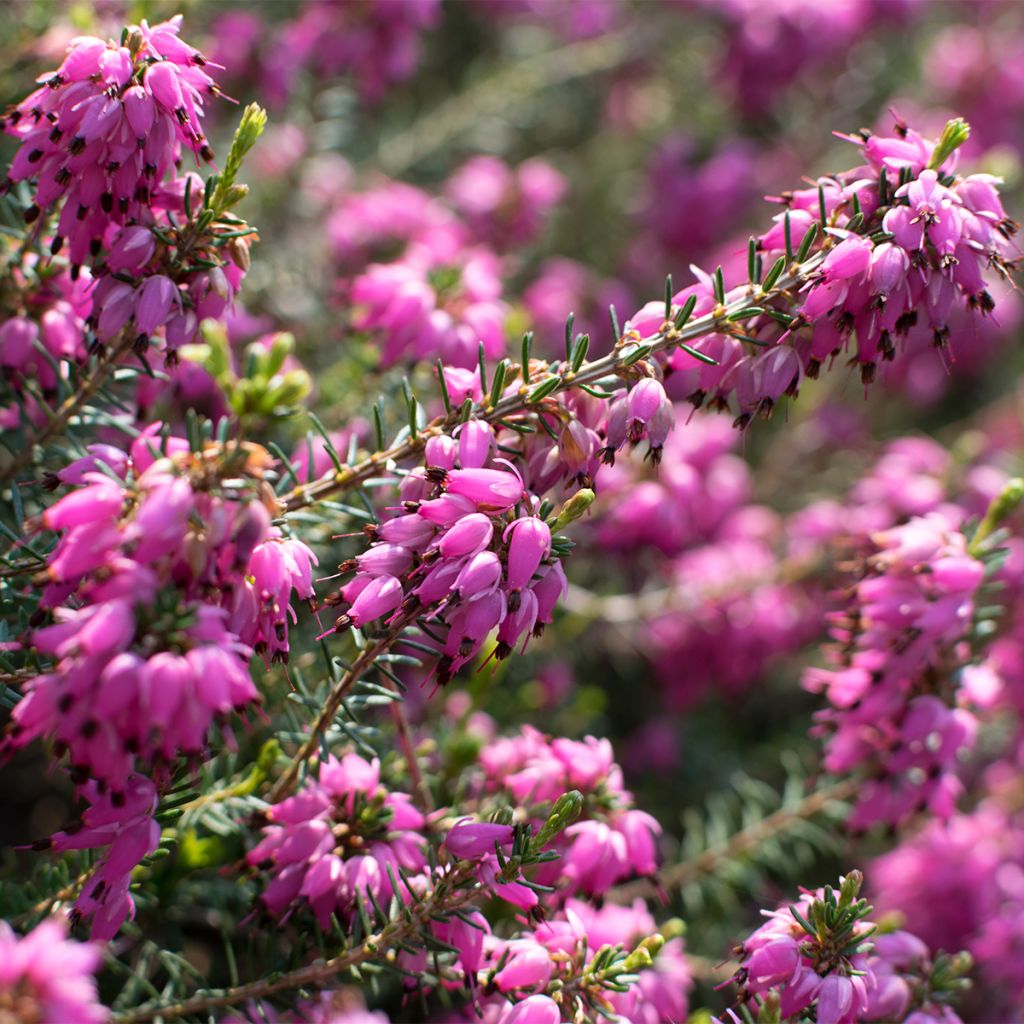

Erica carnea Myretoun Ruby - Winter Heath
Erica carnea Myretoun Ruby - Winter Heath
Erica carnea Myreton Ruby
Winter Heath, Spring Heath, Snow Heather, Alpine Heath
I ordered a series collection of heathers on October 22nd. The shipment took place on time in two separate packages. I picked up the first package at a collection point 4 days later. The second package was reported as damaged by Chronopost. Therefore, I immediately reported it. From what I understood, you asked Chronopost to still deliver the package (just in case) and you asked me to accept it. You were supposed to call me back the same day. The weekend passed without any news... I had to call you again at the beginning of the week to find out if things had evolved... (On this occasion, I asked you if you had the details of the delivered plants and the ones not received: you answered yes). Your next message asked me to specify which plants were missing...! I was able to call you back the next day, and you confirmed that the plants not received were available for reshipment. I realize today that this "new" order will be shipped on November 14th (in two weeks), with a delivery scheduled around November 20th, nearly a month after my initial order... I hope you have been compensated for your loss by Chronopost, but on my side, I am still waiting to be able to organize a flowerbed, hoping to find time to garden under favourable climate conditions. I understand that your carrier is responsible for this fiasco, but I am experiencing abnormal inconveniences. By ordering from you, as I usually do, I expected better responsiveness in tracking and resolving this incident. Nevertheless, I would like to reassure your customers that the received plants are compliant and in good condition.
Jef, 01/11/2023
This item cannot be shipped to the selected country
Delivery charge from €5.90
More information
Schedule delivery date,
and select date in basket
This plant carries a 24 months recovery warranty
More information
We guarantee the quality of our plants for a full growing cycle, and will replace at our expense any plant that fails to recover under normal climatic and planting conditions.
From €5.90 for pickup delivery and €6.90 for home delivery
Express home delivery from €8.90.
Does this plant fit my garden?
Set up your Plantfit profile →
Description
Erica carnea 'Myretoun Ruby' is an old variety of Winter Heather appreciated for its abundant flowering of a beautiful dark pink bells. It bears an intense and warm colour that brings the garden to life in a unique way from winter to early spring when colours are rare. It forms a pretty spread-out tuft with dark green foliage that covers the ground well and remains attractive all year round, even outside of flowering. Particularly hardy, this heather prefers limestone soils and dappled sunlight.
Erica carnea 'Myretoun Ruby' belongs to the Ericaceae family. It is one of the many descendants of Erica carnea native to the limestone Alps. It is a well-branched undershrub with a very low and spread-out habit, 15 cm (5.9 in) tall and 30 cm to 40 cm (11.8 in to 15.7 in) wide. Its growth is quite slow, with a lifespan of about fifteen years. From January-February to April-May, it produces reddish-brown flower buds that unfold into small urn-shaped flowers of a bright violet-pink colour, with prominent stamens that turn crimson before fading. The bells are arranged in clusters 5 cm to 10 cm (2 in to 3.9 in) long, at the ends of leafy stems. The flowering is nectar-bearing, providing a valuable source of pollen and nectar for bees in early spring. The evergreen foliage consists of small, narrow, upright, dark green leaves.
Erica carnea 'Myretoun Ruby' will find its place as ground cover at the base of deciduous or evergreen bushes, where it appreciates light shade. It can also be used in rock gardens, alongside alpine plants. It can be cultivated both in urban and rural areas. Being one of the best garden plants, you can plant it individually, as well as in heather gardens, borders, and containers.
While heathers, especially the genus Erica, are often associated with the wet Atlantic heathlands of Brittany, Ireland, or Scotland, there are also heathers adapted to dry climates and limestone soils, such as those found in Mediterranean regions. However, one of the richest areas for heathers is located far away, in South Africa. In the Cape region, there is a vegetation formation on acidic soil, similar to Mediterranean scrub vegetation, called Fynbos, which includes nearly 625 heather species out of the 740 species that exist worldwide.
Report an error about the product description
Erica carnea Myretoun Ruby - Winter Heath in pictures
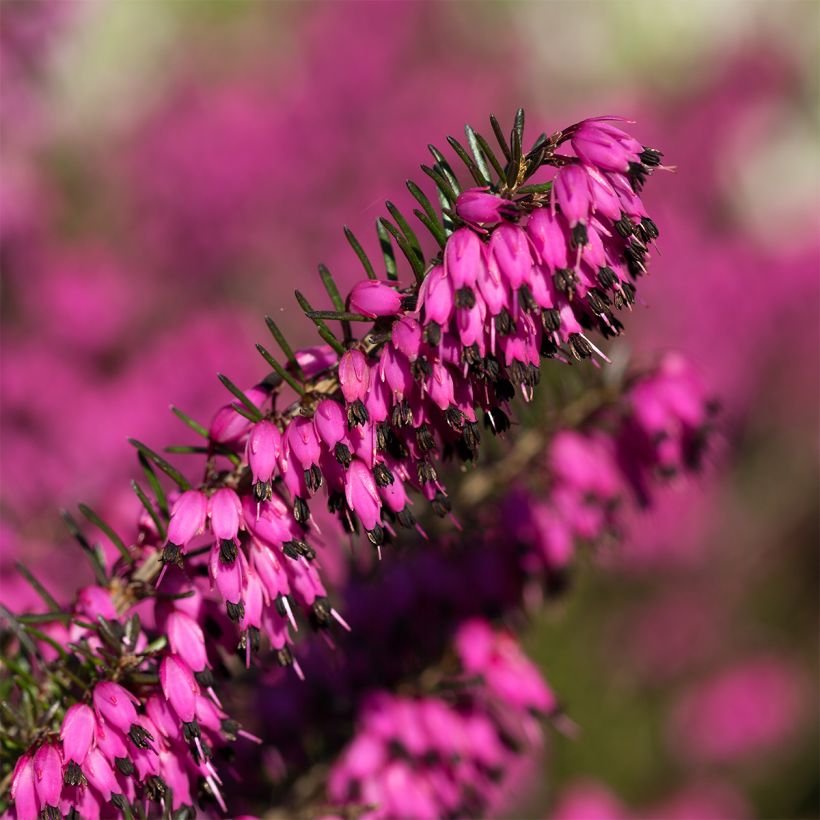

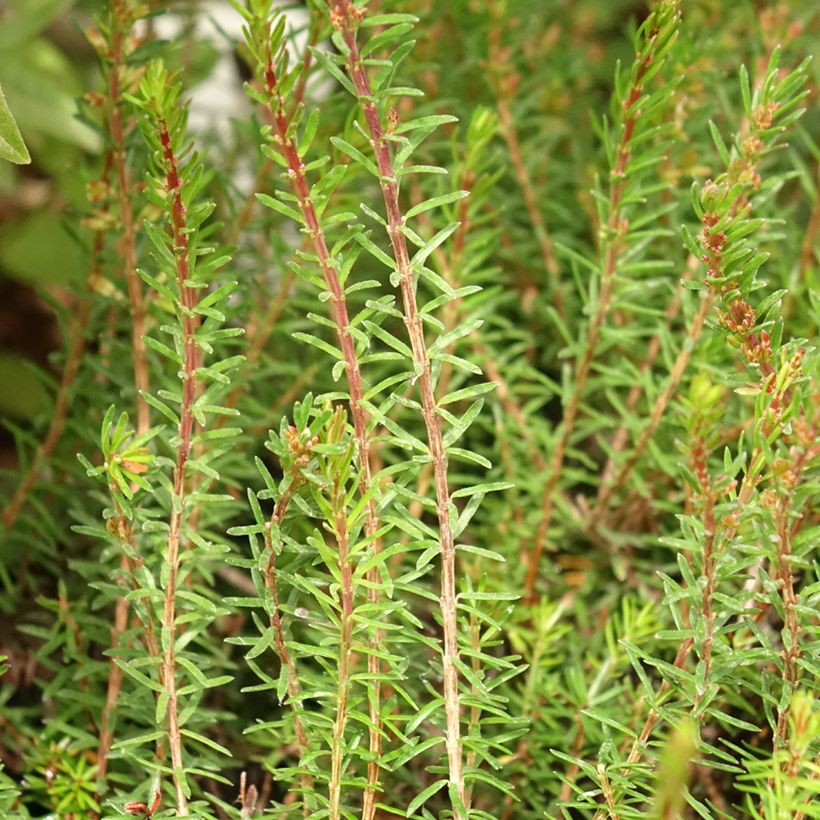

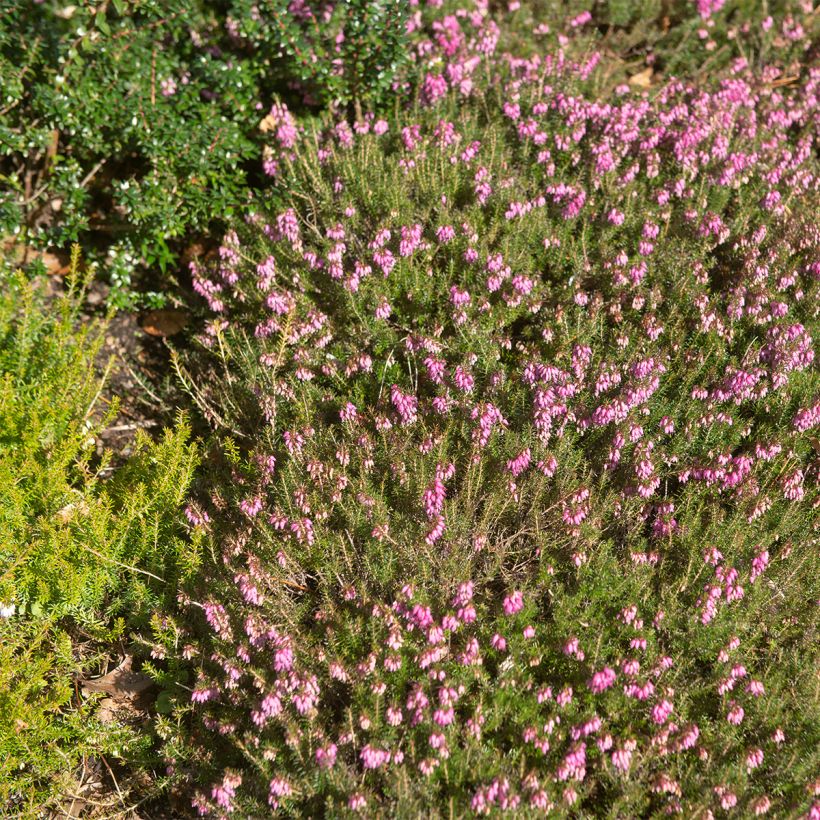

Plant habit
Flowering
Foliage
Botanical data
Erica
carnea
Myreton Ruby
Ericaceae
Winter Heath, Spring Heath, Snow Heather, Alpine Heath
Cultivar or hybrid
Other Heather
Planting and care
Erica carnea 'Myretoun Ruby' prefers soil that is not too rich in organic matter. It adapts very well to poor terrains. The soil should be light, sandy, slightly acidic, neutral to limestone, moist but well-drained. Plant in autumn or spring, without burying the collar too deeply. This plant appreciates non-burning full sun or partial shade. During the first two years, carefully weed around the base. Adapted to dry environments, the roots of this heather are highly ramified in the soil and prevent, once well established, the establishment of other species nearby. In case of prolonged drought, mulch around the base to retain some moisture. Erica can be susceptible to phytophthora (root rot), pythium and rhizoctonia during hot and humid periods.
Planting period
Intended location
Care
-
, onOrder confirmed
Reply from on Promesse de fleurs
Evergreen shrubs
Haven't found what you were looking for?
Hardiness is the lowest winter temperature a plant can endure without suffering serious damage or even dying. However, hardiness is affected by location (a sheltered area, such as a patio), protection (winter cover) and soil type (hardiness is improved by well-drained soil).

Photo Sharing Terms & Conditions
In order to encourage gardeners to interact and share their experiences, Promesse de fleurs offers various media enabling content to be uploaded onto its Site - in particular via the ‘Photo sharing’ module.
The User agrees to refrain from:
- Posting any content that is illegal, prejudicial, insulting, racist, inciteful to hatred, revisionist, contrary to public decency, that infringes on privacy or on the privacy rights of third parties, in particular the publicity rights of persons and goods, intellectual property rights, or the right to privacy.
- Submitting content on behalf of a third party;
- Impersonate the identity of a third party and/or publish any personal information about a third party;
In general, the User undertakes to refrain from any unethical behaviour.
All Content (in particular text, comments, files, images, photos, videos, creative works, etc.), which may be subject to property or intellectual property rights, image or other private rights, shall remain the property of the User, subject to the limited rights granted by the terms of the licence granted by Promesse de fleurs as stated below. Users are at liberty to publish or not to publish such Content on the Site, notably via the ‘Photo Sharing’ facility, and accept that this Content shall be made public and freely accessible, notably on the Internet.
Users further acknowledge, undertake to have ,and guarantee that they hold all necessary rights and permissions to publish such material on the Site, in particular with regard to the legislation in force pertaining to any privacy, property, intellectual property, image, or contractual rights, or rights of any other nature. By publishing such Content on the Site, Users acknowledge accepting full liability as publishers of the Content within the meaning of the law, and grant Promesse de fleurs, free of charge, an inclusive, worldwide licence for the said Content for the entire duration of its publication, including all reproduction, representation, up/downloading, displaying, performing, transmission, and storage rights.
Users also grant permission for their name to be linked to the Content and accept that this link may not always be made available.
By engaging in posting material, Users consent to their Content becoming automatically accessible on the Internet, in particular on other sites and/or blogs and/or web pages of the Promesse de fleurs site, including in particular social pages and the Promesse de fleurs catalogue.
Users may secure the removal of entrusted content free of charge by issuing a simple request via our contact form.
The flowering period indicated on our website applies to countries and regions located in USDA zone 8 (France, the United Kingdom, Ireland, the Netherlands, etc.)
It will vary according to where you live:
- In zones 9 to 10 (Italy, Spain, Greece, etc.), flowering will occur about 2 to 4 weeks earlier.
- In zones 6 to 7 (Germany, Poland, Slovenia, and lower mountainous regions), flowering will be delayed by 2 to 3 weeks.
- In zone 5 (Central Europe, Scandinavia), blooming will be delayed by 3 to 5 weeks.
In temperate climates, pruning of spring-flowering shrubs (forsythia, spireas, etc.) should be done just after flowering.
Pruning of summer-flowering shrubs (Indian Lilac, Perovskia, etc.) can be done in winter or spring.
In cold regions as well as with frost-sensitive plants, avoid pruning too early when severe frosts may still occur.
The planting period indicated on our website applies to countries and regions located in USDA zone 8 (France, United Kingdom, Ireland, Netherlands).
It will vary according to where you live:
- In Mediterranean zones (Marseille, Madrid, Milan, etc.), autumn and winter are the best planting periods.
- In continental zones (Strasbourg, Munich, Vienna, etc.), delay planting by 2 to 3 weeks in spring and bring it forward by 2 to 4 weeks in autumn.
- In mountainous regions (the Alps, Pyrenees, Carpathians, etc.), it is best to plant in late spring (May-June) or late summer (August-September).
The harvesting period indicated on our website applies to countries and regions in USDA zone 8 (France, England, Ireland, the Netherlands).
In colder areas (Scandinavia, Poland, Austria...) fruit and vegetable harvests are likely to be delayed by 3-4 weeks.
In warmer areas (Italy, Spain, Greece, etc.), harvesting will probably take place earlier, depending on weather conditions.
The sowing periods indicated on our website apply to countries and regions within USDA Zone 8 (France, UK, Ireland, Netherlands).
In colder areas (Scandinavia, Poland, Austria...), delay any outdoor sowing by 3-4 weeks, or sow under glass.
In warmer climes (Italy, Spain, Greece, etc.), bring outdoor sowing forward by a few weeks.

































